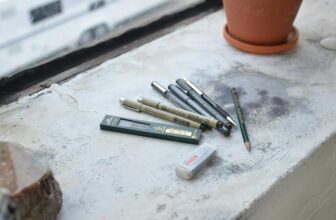
When considering a drawing tablet, it's crucial to focus on specific features that will enhance your artistic workflow. From the size of the tablet to its compatibility with software, each aspect plays a vital role in your creative process. But what about the lesser-known factors that could make a significant difference in your digital art journey? Stay tuned to uncover these hidden gems that might just revolutionize the way you approach your next masterpiece.
Key Considerations for Drawing Tablet Size
When selecting a drawing tablet, consider the optimal size based on your workspace and artistic needs. The size of the tablet plays a crucial role in your overall drawing experience. If you have limited space, a smaller tablet might be more suitable, allowing you to work comfortably without feeling cramped. On the other hand, if you work on detailed illustrations or prefer broader strokes, a larger tablet provides more room for your hand movements, enhancing precision and control.
Before deciding on a size, think about the kind of artwork you create. For intricate designs or fine lines, a smaller tablet can suffice, but for sweeping brush strokes or elaborate compositions, a larger surface area offers better flexibility. Additionally, consider your workflow and how the tablet size will impact your productivity. A well-suited tablet size can make a significant difference in your creative process, so take the time to evaluate your requirements before making a purchase.
Understanding Pressure Sensitivity Levels
Consider how pressure sensitivity levels impact your drawing tablet experience to enhance your artistic control and precision. Pressure sensitivity refers to the tablet's ability to detect varying levels of pressure from the stylus, allowing you to create lines of different thicknesses and opacities based on how hard you press. Tablets with higher pressure sensitivity levels provide a more natural drawing experience, mimicking traditional tools like pencils or brushes.
A tablet with low pressure sensitivity may limit your artistic expression, making it challenging to achieve nuanced strokes and shading. Typically, tablets range from 300 to 8000+ levels of pressure sensitivity, with higher levels offering finer control over your artwork. When choosing a tablet, consider your artistic needs and the type of work you do. If you focus on detailed illustrations or digital painting, opting for a tablet with higher pressure sensitivity can greatly benefit your workflow.
Experimenting with different pressure levels will help you find the right balance between responsiveness and control, ultimately enhancing your creative output.
Evaluating Compatibility With Art Software
To ensure a seamless integration of your drawing tablet with art software, assess its compatibility with the programs you frequently use. Before making a purchase, check if the tablet is compatible with popular software like Adobe Photoshop, Illustrator, Corel Painter, or any other software you rely on for your creative work. Some drawing tablets may have limitations or require specific drivers to function properly with certain programs. It's essential to verify that the tablet you choose works harmoniously with your preferred software to avoid any compatibility issues that could hinder your workflow.
Additionally, consider looking into the specific features of the drawing tablet that enhance its compatibility with art software. For instance, features like customizable shortcut keys, adjustable pen settings, and compatibility with different operating systems can contribute to a smoother and more efficient creative process. By ensuring your drawing tablet is fully compatible with your preferred art software, you can optimize your digital art workflow and unleash your creativity without technical barriers.
Exploring Additional Features and Accessories
Explore the range of additional features and accessories available for drawing tablets to enhance your digital art experience further. When selecting a drawing tablet, consider features like customizable shortcut buttons that allow you to set frequently used functions for quick access. These shortcut buttons can streamline your workflow and boost productivity. Some tablets also offer tilt sensitivity, enabling you to vary line thickness and shading by adjusting the angle of your stylus, mimicking traditional art techniques.
Additionally, explore the option of purchasing a screen protector to safeguard your tablet's display from scratches and smudges, ensuring a clear drawing surface. Investing in a quality stylus with pressure sensitivity can significantly impact your artwork by allowing for precise control over line weight and opacity. Moreover, a pen stand or holder can keep your stylus secure when not in use, preventing it from getting lost or damaged.
Lastly, look into accessories such as drawing gloves to minimize friction between your hand and the tablet surface, creating a smoother drawing experience. By exploring these additional features and accessories, you can personalize your drawing setup to suit your artistic needs and preferences.




